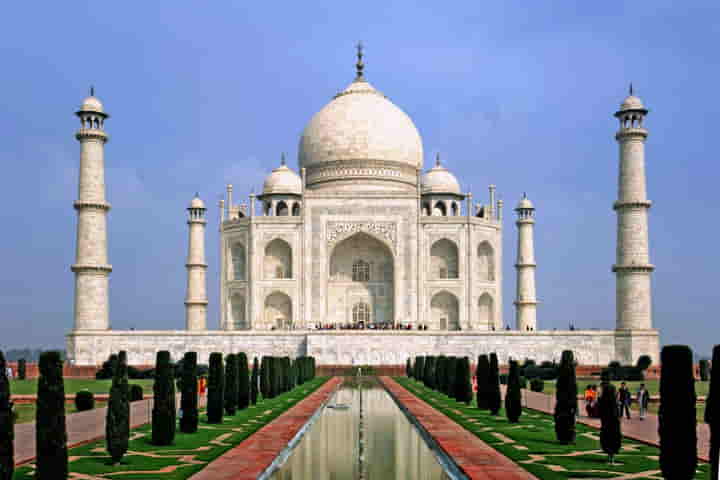Like people bee-lining parlours in the hope of recovering their skin glow, the iconic Taj Mahal is also set for a pampering experience to restore its fading luster. Taj Mahal's white marble dome, will get a novel mud pack treatment, with workers using scaffolds to reach the very top of the structure.
This restoration is likely to be scheduled in the month of October and is expected to go for at least six months and it is expected to cost Rs.50 lakhs.
Before this, authorities in 2019 had put the four minarets around the Taj Mahal and the interior periphery under a mud pack and restored their beauty.
In 2020, clay-pack treatment was given to the replicas of the graves of Mughal Emperor Shahjahan and his wife Mumtaz Mahal for a facelift. This was done before the US President Donald Trump’s visit to Taj Mahal.
According to statistics, Taj Mahal has undergone the mud treatment six times before although the main dome was never touched. The need to use this procedure is to remove yellow stains on the marble and make it look as good as new. Coating of the mud pack will be applied at least two to three times as it is the first time the dome is being touched.
Speaking to The Times of India, the Superintending Archaeologist (Science branch) of the Archaeological Survey of India, Agra, M.K. Bhatnagar said: “We had plans to start the work after the monsoon season. But weather conditions have to be favourable. The cleaning cannot be carried out in high humidity. The Covid-19 pandemic is also one of the factors as it will impact the availability of manpower.”
Sharing more details, Bhatnagar added: “Iron scaffolding will be tied all around the dome for this. The load will be divided equally according to the suggestions given by a technical team and we will also take the help from engineers.”
The mud pack basically has the same ingredients as that being used by women to restore their natural glow on the face. According to an official: “A thick layer of lime-rich clay is plastered over the affected surface and left to dry.”
When the clay dries, a soft brush is used to remove the flakes and then it is washed with water and again with distilled water to wash away the impurities.




















